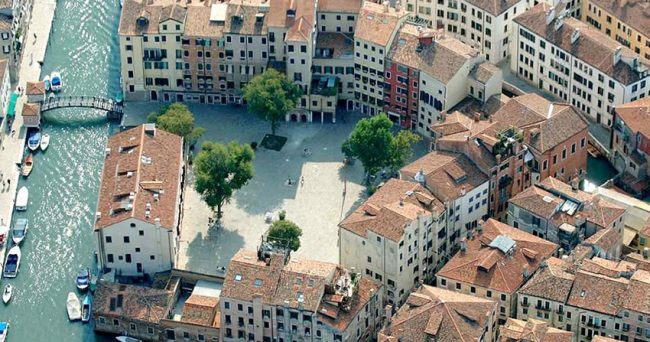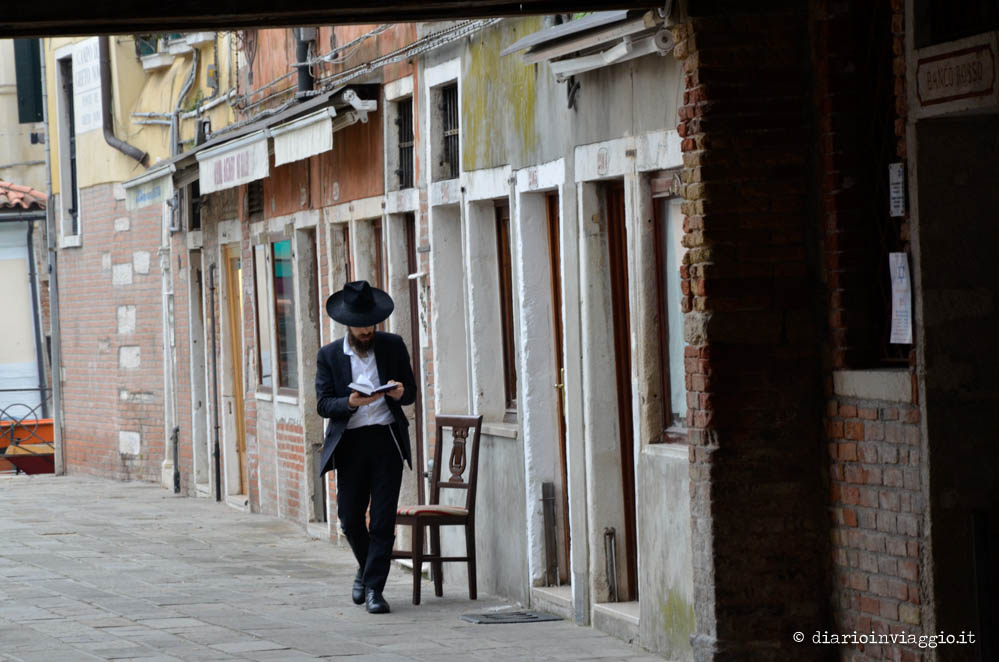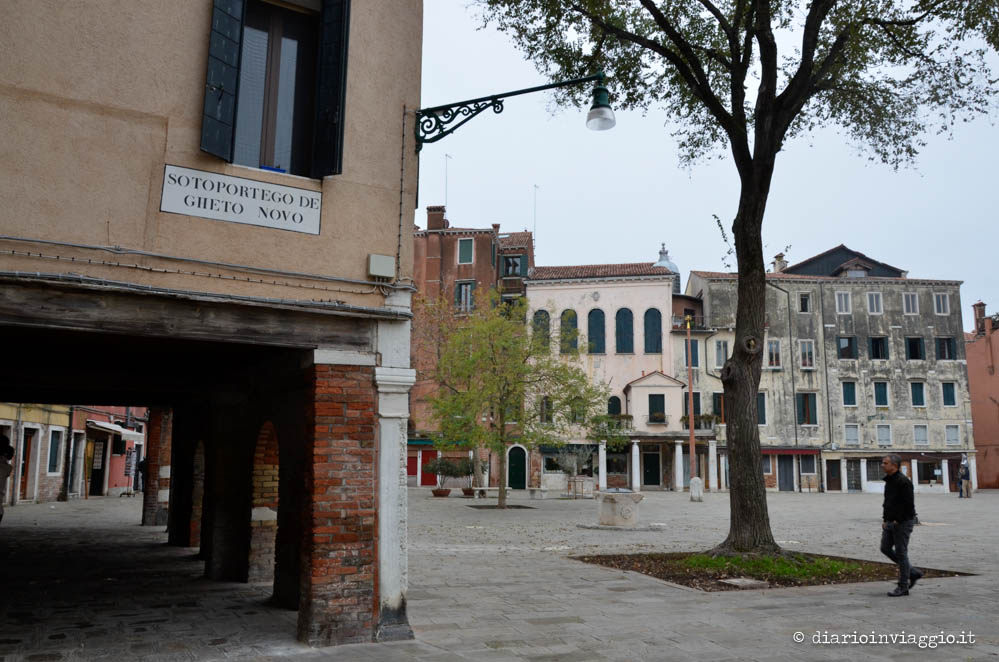



The Ghetto was the district of Venice where Jews were forced to reside during the period of the Republic of Venice. It is located in the Cannaregio district and is still the hub of the Jewish community of Venice, home to synagogues and other religious institutions.

In medieval times, the Ghetto was the area of ​​the city where the public foundries were concentrated and only starting from 1516 was it intended as a forced residence for the Jews. Hence the common name ghetto to indicate a Jewish quarter and, in an even broader sense, a district in which the socially excluded minorities of a community are concentrated.

Always a great center of trade between East and West, Venice is known as a place where several ethnic groups manage to coexist without conflicts. In fact, since the beginning of the eleventh century, the Jewish community settled in the city, forcing the Republic to organize the coexistence of different religions within the same island.
In 1516, the Serenissima established that Jews should only live in one area of ​​Venice: an area was thus designated, where the public foundries were previously located and bombards were manufactured. So much so that the name ghetto derives from the Venetian word "géto" which means to merge this area was closed during the night and Venetian Christians carried out patrols to check for any nighttime assaults.

The Jewish ghetto, the oldest in the world, has remained intact and is still characterized by dark arcades, peeling paint, clothes hanging out to dry and windows placed so close to each other that you get back pain just thinking about it. low ceiling.

The first settlements Until the 14th century, Jews were allowed to come to Venice for money lending activities, but they had no permanent residence permit. The first Jews were allowed to settle in Venice only in 1385, when the city was involved in a war against nearby Chioggia and needed loans from Jewish money lenders. 1516 But racism persisted and in 1516 the Venice government council confined all Jews to smallen castings, or foundries. The gates were closed at night and restrictions were placed on Jewish economic activities. Jews were only allowed to run pawn shops and lend money, trade textiles and practice medicine.

They were allowed to enter the area not far from today's train station, where during the day the Ghetto had to be left, but they were marked as Jews: men wore a yellow circle sewn on the left shoulder of their cloak or jacket, while women they wore a yellow scarf. Later, the circle of men became a yellow cap and later again a red one.

1528 The first Jews to settle in the ghetto were the Ashkenazis of Central Europe. They built two synagogues. the Scola Grande Tedesca in 1528-29 and the Cantone della Scola in 1531-32. They are on the top floors of the adjacent buildings, above the Jewish museum and from the outside, they are not easily distinguishable from the apartments that surround them.
1541 Later came the Levantine Jews, who practiced the Sepharadic rite.

The Jewish presence in Venice is already attested before the year one thousand, although it will be necessary to wait until the late fourteenth century to be able to appreciate a consistent and stable settlement.

Gradually, despite the alternation of permits and bans to stay in the city, the Jews became a considerable nucleus in Venice and, sensing the need to organize their presence, the government of the Republic, with a decree of 29 March 1516, established obligations and restrictions for the entire Jewish population. Thus it was decided that everyone should live in only one area of ​​the city, without being able to leave it either at night or during Christian holidays.
Jewish ghetto
Address: Calle Ghetto Vecchio, 1139, 30121
Phone:
Site:
https://www.jewishvenice.org/Location inserted by
giulia